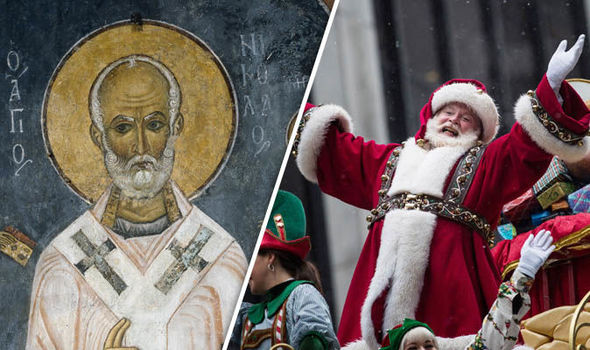There are several stories about how St. Nicholas (Macedonian:Sveti Nikola) was named Santa Claus. To this day we've heard many different ones, but which one is the real one? How did a bishop and a saint become a symbol of the celebration of the Christmas holidays and advertisements? History tells the story.
A man named Nikola
The man who lived in the 4th century in the place Mira, then Greek, and today a Turkish place, was a bishop. He was the only child of his parents, Nina and Theofan. His name Nikola, translated means "winner". As a child, he admired the Scripture and began to study it After studying, he began to dedicate himself to Bible teaching and apply it in the real world. His parents taught him to be devoted to Christianity, to which he actually devoted his whole life. When his parents died, he was still young, and they left him a large sum of money, which he spent to help others.
The first story about give and help
There is an interesting story that tells of his good and miraculous deeds. It is the story of a man who had two daughters. His daughters were already adults, it was time for them to get married, and he needed a dowry to marry them. In those days, a dowry was given to the groom by the bride's parents. The man was poor, he had no dowry money and his daughters could not get married. One evening, Nicholas secretly threw a bag of gold coins into their chimney. He repeated the same for his second daughter. Doing the same for his second daughter, he was discovered by the curious father. Although he asked the man not to reveal his identity, after a while he was revealed. Thus, after people suddenly received money or some kind of gifts for children, they knew they were from him. In addition to helping the children, he also helped the sailors. From then on, sailors and other people prayed for his help while they were at sea. He was canonized because of his goodness.
How St. Nicholas became Santa Claus?
The story of the origin of his name actually begins with the above-mentioned bishop, who continued in the footsteps of Jesus "sell what you have and give it to the poor." He used what his parents left him to help others — the sick, the afflicted, and the poor. After the persecution of the Christians, the bishop was imprisoned by Diocletian. He survived prison by believing in Jesus. When he returned, he ascended the throne again as Christian Bishop. He defended Christianity from Arianism. During the Victorian period, he wore his red mantle. He had them in many colors, but red was his favorite. With his good deeds, he left an impression all over Europe, and then in America, where the connection with today's white-bearded man begins.
The new name of the Christian bishop evolves from the Dutch name "Sinter Klaas", which is actually an abbreviated form of the saint's name. In 1804, John Pintard, a member of the Historical Society of New York, engraved the image of the Christian benefactor on a wooden background at their annual meeting. The woodwork contains a picture of today's modern picture we have. The background of the picture was with a fireplace, and above the fireplace were socks, with which people today decorate their homes for Christmas and New Year, along with their Christmas tree. In 1809, Washington Irving, in his book The History of New York, described the bishop as a "patron saint" of New York, which was a contribution to popularizing the story of his existence. Later, in 1823, another song was released, entitled "The Night Before Christmas". This Christmas song, which is known to all Christians today, was written by Clement Clark Moore. Moore was initially hesitant about releasing the song because of the content and also because of the image it would convey to people.















No comments: